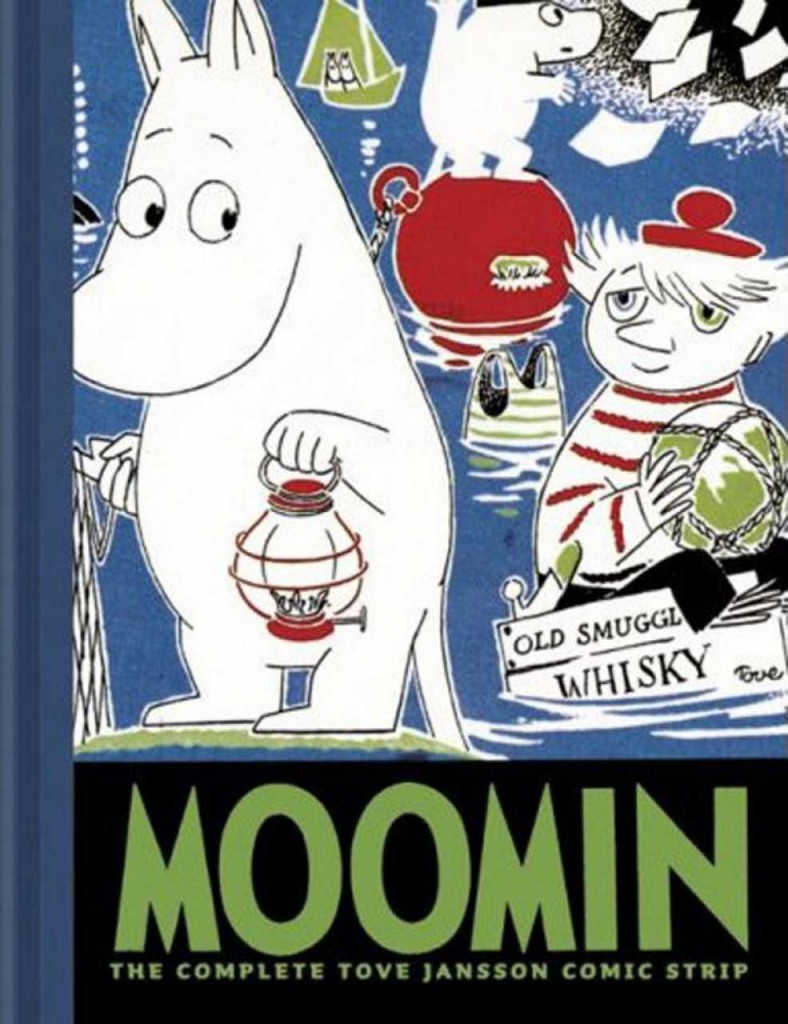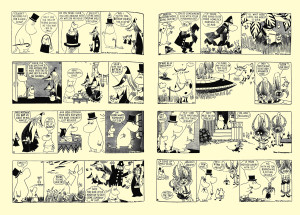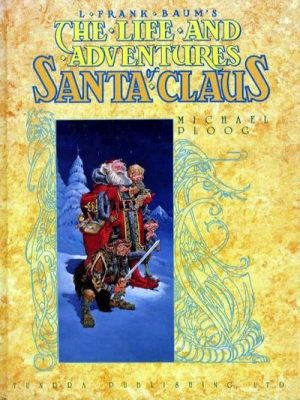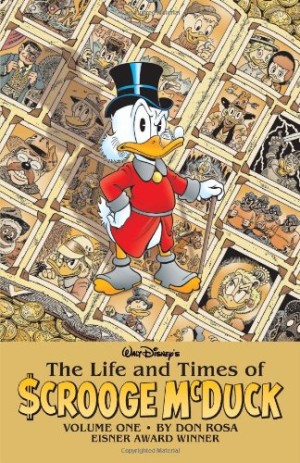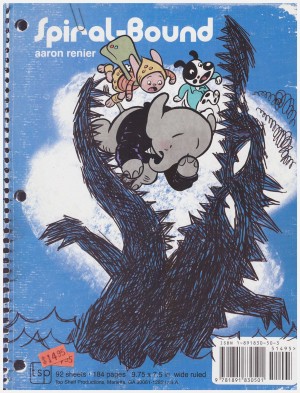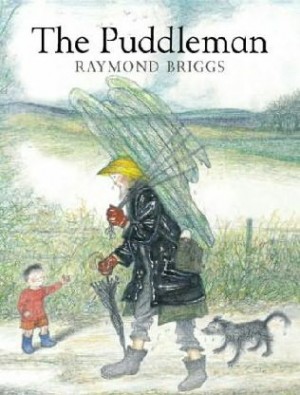Review by Woodrow Phoenix
In this third volume of Moomin collecting all the daily newspaper comic strips written and drawn by Tove Jansson, the stories are a little shorter in length so there are five episodes in this volume instead of four. In Moomin Falls in Love (1956), Moomin’s constant reading of poems and novels has made him into even more of a dreamer than usual. “I wonder why the heroine in a book is always much more beautiful than the one at home,” he muses as Moomin valley is flooded by a rainstorm. The waters bring the beautiful and marooned La Goona to his house. The men are all bewitched (“How does it feel to be so beautiful?” Moomin asks her. “Oh, I am used to it,” she replies) and Snork Maiden soon gets jealous of her diva-ish rival. It looks like a job for Mymble, who has vast experience of hopeless love affairs. Moomin Valley Turns Jungle (1956) happens as a result of a heatwave. Tropical exotic plants and fruits sprout everywhere and all the wild animals escape from the zoo. The Moomins welcome them into their new paradise but then the zoological experts arrive to try to retrieve them.
In Moomin and the Martians (1957) Moominmamma finds a broken flying saucer in her cabbage patch. She cannibalises a few parts to fix the family’s broken radio, but when Moominpappa presses a button, he turns himself and Moomin invisible. Trying to fix that problem just creates different ones. “This could be turned to profit. But HOW?” wonders Sniff. Moomin and the Sea (1957) begins with Moominpappa deciding to live out his “romantic yearning to keep a lighthouse” and write a great novel about the sea. They meet Too-Tikki on the lighthouse island, and struggle amidst a variety of nautical monsters and longeurs while Moominpappa waits for inspiration. In Club Life in Moomin Valley (1957) Moominpappa starts a new club for ‘rebel fathers’ called the Knights of the Catapult. Moominmamma is so annoyed at not being allowed to join that she decides to join Stinky’s Robbers Club – and then another club run by the police as well. Naturally, complications ensue (“Stinky dear, you really shouldn’t steal so much,” she tells him. “It’s the only thing I’m good at,” he replies) as she tries to be a loyal member of both fraternities…and then joins another.
Jansson’s gorgeous cartooning is funny and beautiful, blending sophisticated design and pattern with graphically original shapes and a sinuous line. These comics look wonderful, and the twisty plots that escalate with the precision of a classic screwball comedy combined with silly, funny dialogue make them equally wonderful to read. It’s amazing that one person could do it all so brilliantly, but Tove Jansson could. However by 1957 she was beginning to feel the strain of producing work of this quality six days a week (one clue to that strain here is the less elegant lettering on Club Life in Moomin Valley). In the next Moomin volume she is assisted by her brother, Lars Jansson.
The stories in this volume also appear in Moomin: The Deluxe Anniversary Edition, a large, slipcased book which contains all 21 stories by Tove Jansson plus never-before-reprinted drawings and character designs.
